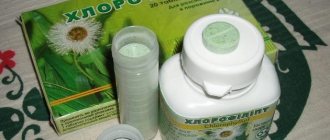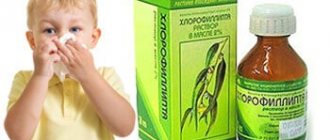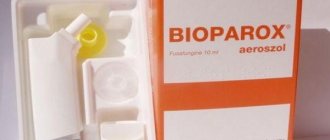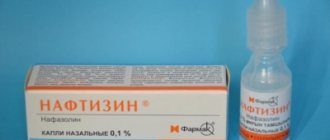During pregnancy, women, unfortunately, often get colds. At the same time, not every drug for sore throat is approved for the expectant mother. Chlorophyllipt is one of the few drugs on the list of potentially approved drugs. This is an affordable and effective herbal antiseptic. A doctor may prescribe it to treat not only respiratory diseases, but also a number of other inflammatory processes.
- 2 Release forms and composition of the drug
2.1 Photo gallery: Chlorophyllipt release forms
- 6.1 Table: antiseptics that a doctor can prescribe for an expectant mother for throat and nose infections
Is Chlorophyllipt allowed during pregnancy?
Chlorophyllipt is one of the medications that is approved for expectant mothers . This is a herbal preparation based on eucalyptus, which has high antibacterial effectiveness and is used in the complex treatment of many infectious and inflammatory diseases. Moreover, it has practically no contraindications. However, when prescribing this drug, the doctor takes into account the following circumstances:
- course and duration of pregnancy;
- general health of the woman;
- current diagnosis.
Local use of Chlorophyllipt is possible at any stage of pregnancy. Ingestion has restrictions; expectant mothers are only allowed to gargle. Douching should also not be used. The doctor chooses this medication by comparing the expected benefit with the risk of an allergic reaction and other side effects, as well as taking into account what other safe and effective drugs can be prescribed for the current indications.
Chlorophyllipt during pregnancy: how to use so as not to harm
What is chlorophyllipt? This is a natural preparation on an oil or alcohol basis, as well as in the form of tablets, which contains extracts of chlorophyll A and B from eucalyptus leaves, which have been used since ancient times to combat diseases of the upper respiratory tract and various infections. It is very effective in combating microbes and bacteria, which include staphylococcus and streptococcus, which are insensitive to antibacterial therapy.
When will the doctor prescribe it? As a rule, this drug is prescribed for inflammation of the upper respiratory tract, purulent tonsillitis and other purulent-inflammatory ENT diseases, peptic ulcers and dental diseases, in combination with therapy against diseases caused by streptococcus and staphylococcus bacteria. It is prescribed for both internal and external use (gargling, nose drops, douching, gauze bandages, therapeutic enemas, etc.). For internal use, a tablet or oil preparation is usually prescribed.
Release forms and composition of the drug
Chlorophyllipt is produced by different manufacturers. The most common forms are solutions - oil and alcohol. The oil solution is used topically, for application to the mucous membranes and skin, and the alcohol solution is most often used during pregnancy diluted with water to gargle for colds.
You can also find spray and lozenges on sale, also used to treat respiratory infections. But due to the fact that gargling is safer, in terms of the risk of developing overdose symptoms and side effects, sprays and tablets are practically not prescribed to expectant mothers.
Photo gallery: Chlorophyllipt release forms
Chlorophyllipt spray is used for oral hygiene
Chlorophyllipt alcohol solution is most often prescribed to pregnant women to treat a sore throat.
The oil solution is intended for the treatment of cervical erosion, but it is also used for other purposes
Chlorophyllipt lozenges are used for colds
Alcohol-containing preparations during pregnancy can only be used externally or topically in diluted form. This also applies to the alcohol solution of Chlorophyllipt.
Lozenges contain sugar, so diabetics should not use them.
The active ingredient in all forms of the drug is eucalyptus leaf extract, including chlorophyll and eucalyptus essential oil components, which work well against a number of microbes:
- staphylococci and streptococci,
- fungi,
- the simplest.
The effect of the drug is based on the medicinal properties of eucalyptus:
- bactericidal and disinfectant (kills bacteria and inhibits their growth);
- immunomodulatory (stimulates local immunity);
- local pain reliever.
Composition and release form
The active substance of the drug Chlorophyllipt is eucalyptus leaf extract. The drug has 5 release forms:
- oil solution;
- alcohol solution;
- injection solution;
- spray;
- tablet form.
Eucalyptus leaf extract is a natural antiseptic; it is active against Staphylococcus aureus, some strains of streptococcus and bacilli, and pathogenic fungi. Chlorophyllipt is capable of causing inhibition of the central nervous system, which leads to stabilization of the emotional background and a sedative effect from taking the drug. Eucalyptus leaf extract has an expectorant effect, has an anti-inflammatory and analgesic effect when used topically.
Oily Chlorophyllipt during pregnancy is effective against pathologies of the vagina and cervix of inflammatory etiology. Indications for its use are vaginitis, colpitis and cervical erosion.
Chlorophyllipt alcohol solution is not recommended for oral use during pregnancy, as it contains ethanol, which has a harmful effect on the fetus.
This form of release is used topically to accelerate the healing of trophic ulcers and burns, as well as for douching in the vagina for inflammatory diseases.
An alcohol solution of Chlorophyllipt during pregnancy for gargling is recommended for inflammatory pathologies of the ENT organs: sore throat, gingivitis, laryngitis, bronchitis. Attention!
Despite the natural composition of the drug Chlorophyllipt, its use in expectant mothers is possible only after prescription by a specialist, since the drug has contraindications.
Chlorophyllipt in the form of an injection solution is used as part of complex therapy for pneumonia, sepsis, peritonitis, and kidney infections. This medicine is recommended to be used only if the disease is caused by bacteria sensitive to the drug.
Chlorophyllipt spray during pregnancy is used to treat inflammatory diseases of the throat and nose. The tablet form of the drug is used for local treatment of infections of the ENT organs. It can also be used as a component of complex therapy for sepsis, pneumonia, and neurosis.
Indications
Chlorophyllipt is used as prescribed by a doctor as part of combination therapy for various infectious diseases:
- stomatitis (damage to the oral mucosa);
- rhinitis (inflammation of the nasal mucosa);
- pharyngitis;
- laryngitis (inflammatory process of the mucous membrane of the larynx);
- gingivitis (purulent gum disease);
- bronchitis;
- dysbacteriosis;
- cervical erosion;
- haemorrhoids;
- colpitis (inflammation of the vaginal mucosa);
- vaginitis, vulvovaginitis, vaginosis (inflammatory processes of the external genital organs);
- dermatitis;
- erysipelas (specific skin lesion);
- burns.
The essential oil in the composition of the drug can also be used to treat insomnia and neurotic conditions.
Most often, Chlorophyllipt is used during pregnancy as an antiseptic for a sore throat, nasopharynx and upper respiratory tract..
Contraindications and side effects
The only direct contraindication to the use of the drug is intolerance to the active substance or auxiliary ingredients . But there are a number of cases when the use of Chlorophyllipt is also not recommended:
- When used simultaneously with other antiseptics, Chlorophyllipt enhances their effect, which can cause negative consequences in the form of dermatitis or allergies.
- If there is atrophy of the mucous membranes of the upper respiratory tract, the medicine cannot be used for irrigation, rinsing and inhalation.
The results of experimental studies showed that Chlorophyllipt is non-toxic and not dangerous for the development of a child in the womb.
Sometimes, even if there are no contraindications for use, overdose symptoms and adverse reactions may develop, which quickly disappear after discontinuation of the drug:
- swelling of the face and lips,
- swelling of the nasopharyngeal mucosa,
- skin rashes,
- mild headaches,
- diarrhea,
- dry mucous membranes,
- nausea.
Often, an allergy to eucalyptus extract is hereditary, so the patient knows about it in advance.
Instructions for safe use of oil and alcohol solution
During pregnancy, the most popular uses of Chlorophyllipt are:
- To rinse the mouth and pharynx, an alcohol solution diluted with boiled water in a ratio of 1:10 is often used as prescribed by a doctor.
Gargling with diluted Chlorophyllipt and lubricating with an oil solution are safe and effective ways to treat oropharyngeal infections - For instillation into the nasal passages and treatment of the pharynx with a swab soaked in the drug, it is advisable to use an oil solution, since the viscous consistency of the drug is not washed out by saliva. Chlorophyllipt is not an immediate action drug. It is necessary to carry out treatment according to the regimen specified by the doctor for several days.
- A doctor can prescribe chlorophyllipt in tablet form during pregnancy only for severe forms of upper respiratory tract diseases in the absence of a safer alternative.
- In the complex therapy of respiratory tract diseases, steam inhalations are used based on an alcohol solution of Chlorophyllipt, diluted in a ratio of 1:10. The frequency and intensity of inhalations is agreed with the doctor individually.
- To lubricate wounds and treat inflammatory processes of the external genitalia, as prescribed by a gynecologist, Chlorophyllipt is used in an oil solution in the form of applications or tampons.
Cervical erosion, which is included in the list of indications for the use of Chlorophyllipt, is treated extremely rarely during pregnancy; treatment is usually carried out after childbirth.
- If hemorrhoids are detected during pregnancy, the doctor may also prescribe topical application of Chlorophyllipt oil.
All these methods of treating diseases with the help of Chlorophyllipt are possible only in the absence of an allergy to the drug and its components.
Rinsing with Chlorophyllipt during pregnancy
If you first experience painful sensations in the throat area, for example, they may occur when swallowing, rinsing will be the most effective in this case. The main advantage of this method is that the healing solution is not ingested, is not absorbed by the mucous membrane and does not reach the fetus. But with its help, the oral cavity is disinfected and inflammation is relieved.
If you decide to use Chlorophyllipt during pregnancy, prepare a solution. To do this, dilute the alcohol form of the medicine with water (in a ratio of 1:10). Then take a small sip, put the solution in your mouth and gargle. For the desired effect, this procedure must be repeated approximately 3-4 times a day.
How can you replace rinses and applications?
Depending on the diagnosis, the doctor may replace Chlorophyllipt with other medications with a similar effect. Most often these are local antiseptics to treat colds. The table describes some of the replacement options. They have a different composition from Chlorophyllipt, so they cannot be called analogues.
Table: antiseptics that a doctor can prescribe for an expectant mother for throat and nose infections
| Indications | A drug | Active substance | Release form | Main contraindications | ||
| Askosept |
| Pastilles | Hypersensitivity to the drug and its components. | ||
| Elekasol |
| Filter bags for brewing |
| ||
| Tantum Verde | Benzydamine hydrochloride |
|
| ||
| Lysobacter |
| Lozenges |
| ||
| Pinosol |
| Oil drops in the nose |
| ||
| Miramistin | Benzyldimethyl [3-(myristoylamino)propyl] ammonium chloride monohydrate | Solution with spray nozzle | Individual intolerance to the drug. | ||
Photo gallery: antimicrobial sprays, drops, tablets and other remedies for runny nose and sore throat, acceptable for use during pregnancy
Tantum Verde replaces Chlorophyllipt in the treatment of many diseases of the upper respiratory tract
Lizobakt relieves pain and inflammation of the throat
Miramistin is active against bacteria, viruses and fungi and is safe for pregnant women
Pinosol, like Chlorophyllipt, contains eucalyptus extract
Elekasol is effective in treating a sore throat
Instructions for safe use
The variety and versatility of the forms of release of eucalyptus extract allows medical professionals to select the most effective type of medicine and the most effective methods of therapy in each individual case.
Alcohol solution
For infectious diseases of the pharynx, it is recommended to rinse with an alcohol-containing solution, previously diluted with boiled water in a ratio of 1 to 10 (10 ml of Chlorophyllipt per 100 ml of water). The procedure destroys pathogenic bacteria and flushes pus from the throat.
How to gargle correctly
When rinsing, the following rules should be observed:
- The prepared product must be used in one procedure, otherwise the solution will lose most of its beneficial properties.
- Rinse with Chlorophyllipt solution after meals. Then, in the next 30 minutes, you should not eat, otherwise the therapeutic effect will be negated.
- The duration of one procedure is 3–5 minutes. You need to tilt your head back a little; when rinsing, you should pronounce the sound “y” so that the tongue lies lower, providing free access to remote areas of the pharynx.
- The frequency of rinsing and duration of treatment is determined by the attending physician. It is usually recommended to perform the procedure 4-5 times a day.
In addition, in the complex treatment of infectious diseases of the respiratory tract, it is permissible, with the permission of a doctor, to use steam inhalations with the addition of a small amount of eucalyptus alcohol extract. The procedure moisturizes the bronchi, facilitates the release of sputum and destroys pathogens. Not to be confused with nebulizer inhalations: adding Chlorophyllipt to a compressor inhaler is prohibited!
Oil solution for the mucous membranes of the mouth and nose
A solution of Chlorophyllipt in oil is contraindicated for oral administration during pregnancy. Most often, the drug is used to treat inflamed tonsils and nasal cavity. The viscous consistency helps the product linger on the mucous membranes, avoiding being washed out by saliva and other secretions.
The method of using the oil solution is quite simple - soak a cotton swab with the product and lubricate the inflamed mucous membranes with it . After the procedure, you should not eat for 40–60 minutes. To facilitate nasal breathing, a few drops of the drug are instilled into each nostril. The product is also used to treat dental diseases, treating the gums and oral mucosa with it.
Chlorophyllipt will be effective only for bacterial rhinitis. Rhinitis due to viral infections and allergies is not treated with it.
In addition, for dermatological diseases, damage to the skin, inflammation of the external genitalia, it is permissible to use the drug in the form of compresses and cotton swabs.
Erosive damage to the uterine cervix, which is included in the list of indications for the use of an oil solution, is not always treated during pregnancy. Treatment for this disease is usually carried out after delivery.
Tablets and throat spray
Severe forms of infectious respiratory diseases require taking Chlorophyllipt orally, but during pregnancy it is extremely undesirable. The drug in tablets is not prohibited by medical instructions; however, it is prescribed only in cases where the probable benefit to the woman outweighs the possible risk to the child.
The spray is also not recommended for use by pregnant women, since it is a regular alcohol-containing solution, produced in a more convenient form - with a spray nozzle. When the pharyngeal mucosa is irrigated, the alcohol contained in its composition begins to be absorbed into the blood. This may adversely affect the development of the fetus.
Reviews from women
When I became very ill at 8 months of pregnancy, I was in confinement. Doctors decided to inject antibiotics, although this is harmful to the fetus. I had to refuse treatment and go home at my own risk. A therapist called to the house advised me to buy Chlorophyllipt oil solution 2%. It is the oil solution, since alcohol dries out the neck. I diluted a teaspoon in a glass of warm boiled water and gargled every 2 hours. <…> The smell is pleasant and does not irritate the throat.
Anonymous https://irecommend.ru/content/bezopasnoe-sredstvo-ot-boli-v-gorle-dlya-detei-i-beremennykh
The child is 2 months old, and, unfortunately, I was visited by a sore throat, which I have never had before in my life. The ENT doctor prescribed antibiotics and rinsing, I had to take this course, but continued to feed. And now a week later my throat hurts again. To avoid a relapse, I began to look for at least some harmless drug for treatment. So I bought alcohol-based Chlorophyllipt, which I used to gargle, and oil-based Chlorophyllipt, which I used to lubricate the inflamed walls of my throat and nose. The runny nose went away instantly, and two days later my throat was already getting better. A miracle product, and most importantly, safe for nursing mothers and pregnant women. The only thing is that if you lubricate the throat, it can dry out a little, but overall I’m very pleased, and the taste is very pleasant.
Margarita https://irecommend.ru/content/kormila-grudyu-i-lechila-gorlo
A long time ago, when my sister was pregnant, she was tormented by a cough... As time passed and the pregnancy progressed, and the cough caused more and more problems, I had to go to an ENT specialist and take a throat swab. The result is staphylococcus. And the ENT doctor prescribes an oil solution of Chlorophyllipt, and it’s just an inexpensive medicine, no injections, no pills, just lubricate your throat 3 times a day. A four-month cough went away in 3 days!!!!
Vargana https://otzovik.com/review_954661.html
I tried it and didn’t regret it. I used both an alcohol solution (diluted a teaspoon in a glass of water several times a day) and an oil solution (dipped an ear stick in it and coated the pustules). Cured a sore throat in less than a week. And without any antibiotics!
Asta https://otzovik.com/review_2294017.html










